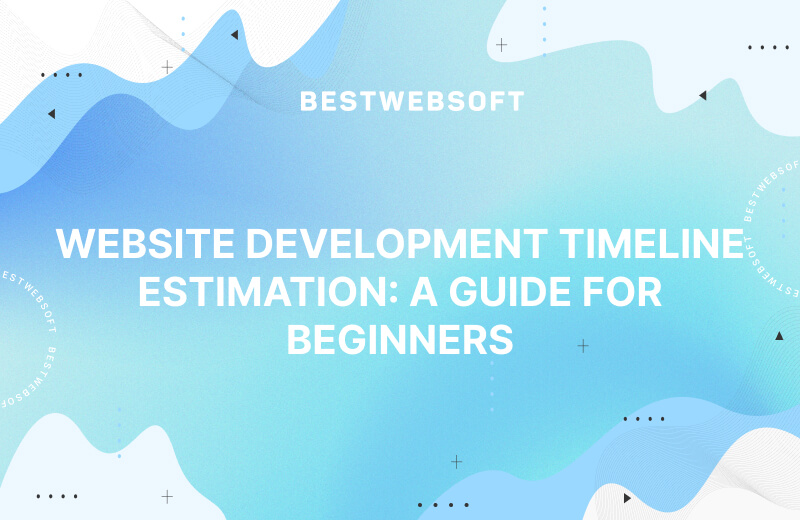
Developing a website can be a daunting task, especially if you’re new to the world of IT. Understanding the steps involved and how long each one takes is crucial for successful project management. In this beginner-friendly guide, we’ll walk you through the entire process of estimating a website development timeline, from initial planning to final deployment.
Step 1: Project Discovery and Planning
Timeframe: 1-2 weeks
The first step in any web development project is to gather information and plan your approach. This phase includes understanding your target audience, setting goals, and determining the technical requirements. At this stage, you’ll want to:
- Define the website’s purpose and objectives
- Identify your target audience
- Determine the site’s structure and navigation
- Consider the necessary design elements (colors, fonts, etc.)
As a beginner, it’s essential to spend ample time on this phase, as it sets the foundation for the entire project. Don’t be afraid to ask questions and seek guidance from experienced web developers.
Step 2: Design and Wireframing
Timeframe: 2-4 weeks
Now that you’ve got a clear understanding of your project goals, it’s time to create a visual representation of your website. This phase involves creating wireframes and mockups to represent the site’s layout and appearance. Here, you’ll:
- Sketch out rough wireframes for key pages
- Develop more detailed mockups using design software
- Gather feedback from stakeholders
- Make any necessary revisions
Keep in mind that design preferences are subjective, and it may take several iterations before settling on a final look. Patience and flexibility are crucial during this stage of development.
Step 3: Website Development
Timeframe: 4-8 weeks
With a solid design in place, you can begin to build the actual website. This phase involves coding the site’s frontend and backend, integrating features, and setting up the necessary databases. Key tasks include:
- Developing the site’s HTML, CSS, and JavaScript
- Implementing any content management systems (CMS) or frameworks
- Integrating third-party services (e.g., payment gateways, email marketing, etc.)
- Testing the site’s functionality and performance
You might encounter challenges during this phase, but don’t be discouraged. Reach out to experienced developers for advice, and take advantage of online resources to learn new skills.
Step 4: Content Creation and Optimization
Timeframe: 2-4 weeks
While the site is being developed, you’ll also need to create and optimize the content that will populate your website. This includes text, images, and multimedia elements. During this stage, you should:
- Write clear, concise, and engaging copy
- Source or create high-quality images and videos
- Optimize your content for search engines (SEO)
- Ensure your content is accessible and user-friendly
Remember, content is king. High-quality, well-optimized content will help your website stand out, attract visitors, and keep them coming back for more.
Step 5: Testing and Quality Assurance
Timeframe: 1-2 weeks
Before your website goes live, it’s crucial to test every aspect thoroughly. This ensures that your site is fully functional, user-friendly, and free of errors. During the testing phase, you’ll want to:
- Test the site’s compatibility across different browsers and devices
- Check for broken links, missing images, and other errors
- Verify the site’s load time and optimize for performance
- Test all forms, buttons, and interactive elements
- Conduct user testing to gather feedback and identify potential issues
It’s essential to address any issues discovered during testing and make the necessary adjustments. This step helps guarantee a smooth user experience when your site goes live.
Step 6: Launch and Deployment
Timeframe: 1 week
Once you’ve completed testing and made any necessary adjustments, it’s time to launch your website. This phase involves configuring your domain, setting up hosting, and making the site publicly accessible. Key tasks include:
- Acquire and configure your domain name
- Choose a reliable web hosting provider
- Configure your site’s DNS settings
- Deploy your website files to the web server
- Set up SSL certificates for security
After these steps are completed, your website will be live and accessible to the public.
Step 7: Maintenance and Updates
Ongoing
Now that your website is live, it’s crucial to keep it up-to-date and well-maintained. Regular maintenance ensures that your site remains secure, functional, and engaging for users. Key maintenance tasks include:
- Updating your CMS, plugins, and themes
- Regularly backing up your website data
- Monitoring and optimizing site performance
- Updating and adding new content
- Addressing any security vulnerabilities
As a beginner, you may find it helpful to establish a maintenance schedule or work with experienced developers to ensure your site remains in top shape.
Conclusion
Estimating the timeline for a website development project can be challenging, especially for beginners. Keep in mind that the actual timeframe will vary depending on the project’s complexity and your level of experience. By understanding each phase and allocating adequate time for each, you’ll be better prepared to manage your project and achieve a successful website launch.
Remember, web development is a learning process. Embrace the challenges, seek guidance from experienced developers, and continually expand your skill set. With persistence and hard work, you’ll become more proficient in website development and better equipped to estimate project timelines.

